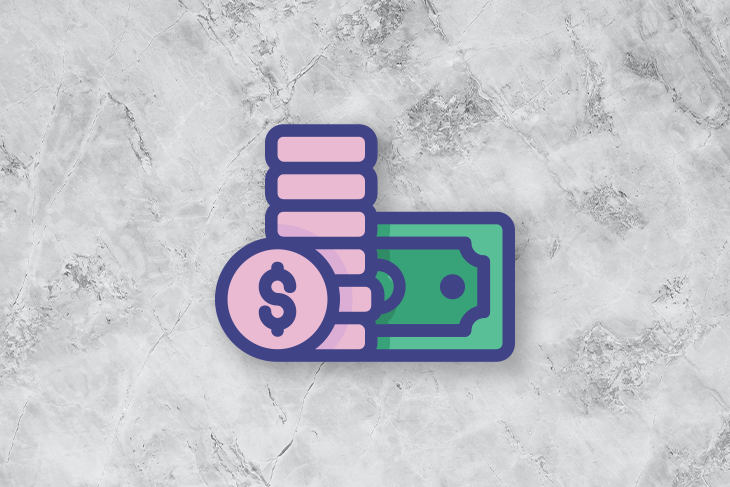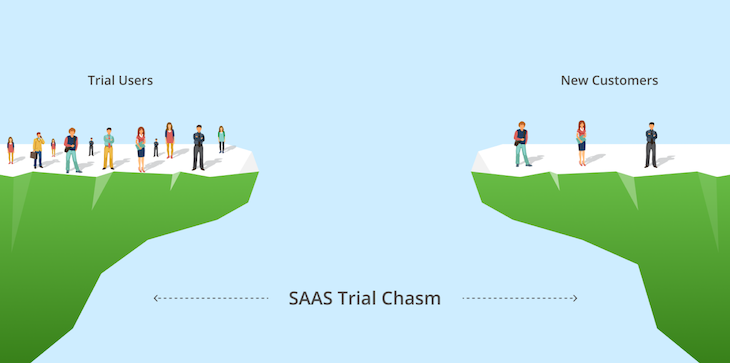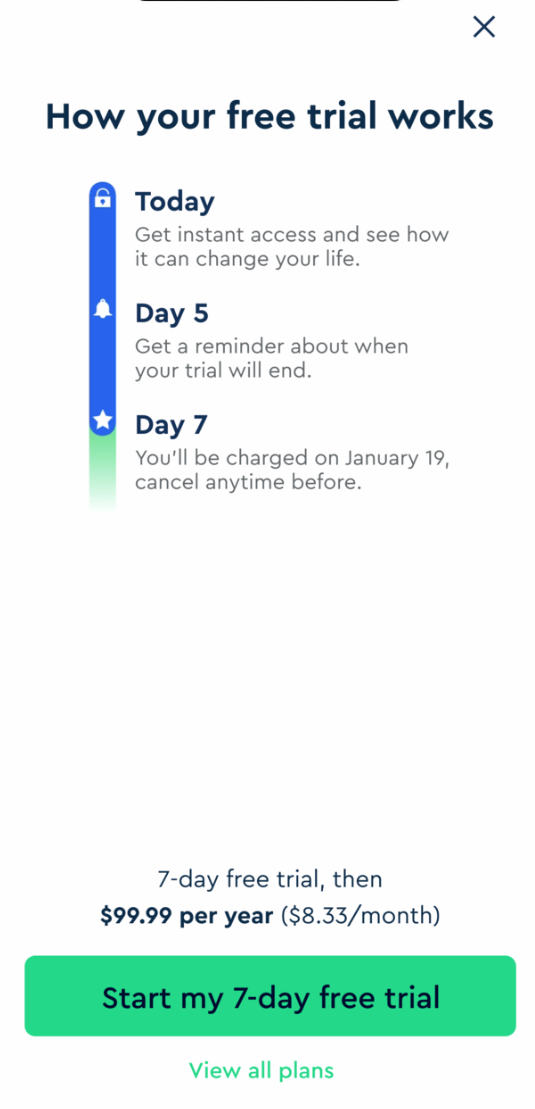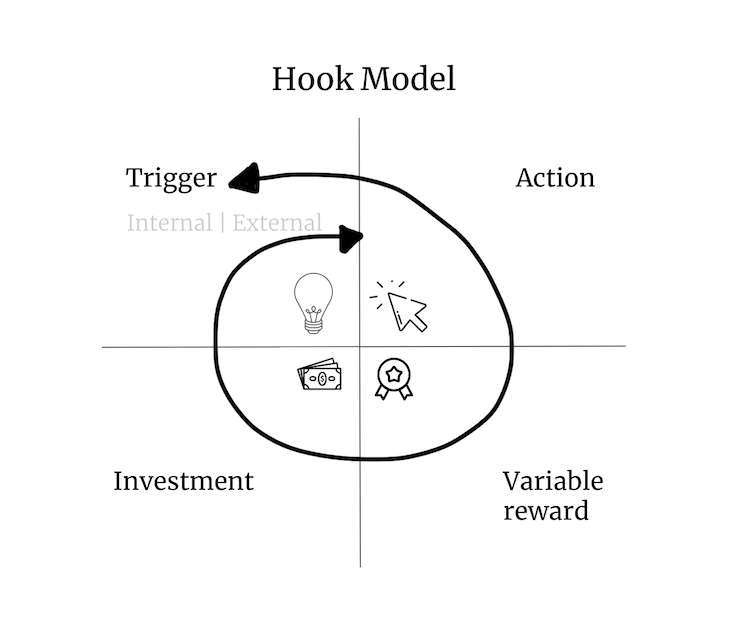A free trial is one of the most potent tactics for product-led growth. It allows your users to experience the full potential of your value proposition before committing any actual money, thus creating an excellent opportunity for you to hook your users and convince them why your product is right for them.

Let’s look at some strategies and tactics to help you improve your conversion rate and get more paying subscribers by revamping the free trial experience.
A free trial means giving your users time-limited access to all your premium features without requiring payment upfront. It finds its application in two types of business models:
If your whole product is behind a paywall, meaning users have to pay to experience it, a free trial is often a must-have feature.
How else would your potential customers know if your product is worth the investment? Expecting users to pay upfront just to try out the product often doesn’t work.
Freemium products allow users to get value for free while having some premium features behind the paywall.
Although freemium is an acquisition motion itself — that is, users use the free version and upgrade to premium organically as they grow annoyed by its limitations — an additional free trial might remove friction and encourage more people to try out the premium subscription.
When a user signs up for a free trial, they are trying to figure out if they get enough value from your product to actually start paying for it. They give you a chance, and if you waste it, they are unlikely to try again.
Unfortunately, many free trial users don’t convert to paying customers. They try out the product, cancel the trial (often on day 1), and never return. The difference between free trial users and those who start paying you is what we sometimes call a “trial chasm”:

The bigger the trial chasm, the slower your paying user and MRR growth. The good news is that, given the opportunity, a free trial provides benefits for both the user and the business. It’s one of the areas where big swings can happen.
While increasing the direct conversion from free to paying users by double-digits is an extremely tough endeavor, it’s not unheard of to double the free trial conversion rate within a month:
Free trial conversion rate = # of free trials that converted into paying customers / # of all free trials in a given period
Let’s explore some tactics and strategies that might help you achieve that.
In this section, we will discuss eight tactics that can help you improve the free trial experience for your users, ultimately leading to better trial-to-subscription conversions. These tactics include:
One of the first things you want to take care of is your day one free trial cancellation rate.
The formula to calculate the percentage of day-one free trial cancellations is:
% Day-one trial cancellations = # of trials canceled within 24 hours / # of all free trials in a given period
This ratio tends to be unfavorably high. For B2C SaaS companies, it’s common for 25-40 percent of users to cancel the trial right after they sign up.
The main reason is users’ fear that they’ll forget about the trial deadline and will be charged at the end of the trial period. There are two problems with that:
There are two ways you can influence day one cancellations:
If the user feels confident they’ll easily remember to cancel the trial before it ends, they are less likely to do so instantly.
A good tactic would be to be transparent about how the timeline of the free trial works (when exactly are you going to charge the user?) and even offer the user to keep track of it for them.
Let’s take a look at Blinkist as an example:

The user is not only informed on exactly what day they will get charged, but Blinkist even offers to remind them on their own, two days in advance, that their trial is expiring.
As a side bonus, it also helped Blinkist increase their push notification opt-in from 6 percent to 74 percent. No doubt as to why.
Another approach could be to incentivize not canceling the trial or penalize cancellations. Some examples could include:
There are no right and wrong answers regarding the level of incentivization or penalization. You should try to discover the right balance by designing small experiments and seeing how they impact user behavior.
Discounting is a powerful monetization optimization strategy. It’s even more powerful if it’s offered at the right moment.
Offering a one-time discount for a trial-to-subscription conversion might be such a moment. It means that users are offered a one-time discount, but only if they convert directly from trial to subscription, and if their trial expires and they want to subscribe later, they have to pay the full price.
You might offer a short-term discount, such as 50 percent off for the first month, or a long-term discount, such as 10 percent off for all subsequent renewals.
You can also consider keeping the discount after the trial expires. For example, if the trial expires but the user subscribes within seven days, they are still eligible for the discount. This way, you might sway some percentage of convinced-but-not-fully-bought-in users and use the additional subscription period to seal the deal.
Proper user onboarding is one of the most powerful tools you have. Good luck getting a 100 percent adoption rate for any other feature.
Yet, although people seem to acknowledge that and add onboarding to their products, they often neglect dedicated onboarding for the trial.
Let that sink in. If you have a freemium product, your premium offering is, in fact, a different product from the free version of your product.
If you onboard users properly to your premium benefits, you greatly increase the chance they’ll use these functionalities during the free trial and, as a result, get hooked.
You can even incentivize users to use your premium features by extending their trial or giving them some extra credits based on their feature usage during the trial.
The most important objective you have during the trial is to hook users into using your product:

To properly hook users, you need first to offer enough external triggers for them to develop their own internal triggers.
Ensure you understand in what context users use your product and prompt them to return to it by implementing a proper push strategy or taking care of your lifecycle emails.
Optimizing trial length is critical, and more doesn’t necessarily mean better. If your trial period is too short, users will not have enough time to properly understand the value you are offering and get hooked on the product.
However, in some cases, a too-long trial might also lead to users misunderstanding the difference between your product’s free and premium variants. Also, if your product is subject to fraudulent behavior (e.g., users creating brand new accounts just to have a trial), the longer trial period makes it easier to abuse loopholes and avoid paying.
You want to find a sweet spot when the trial is long enough for users to fully grasp the value and short enough so they are still in the honeymoon phase when you ask them for money.
No matter how many free trial optimization tactics you implement, they won’t help you much if the product doesn’t defend itself. Your primary long-term opportunity to improve your free trial conversion rate is to provide as much value for customers as possible.
Experimenting with various free trial approaches can help you lift your metrics and improve revenue quickly, but from a long-term perspective, optimizations are not a strategic opportunity. Working on your value proposition is.
The free trial experience is a critical moment of the user journey. It’s the moment your prospective customers decide they want to try out your premium offering without yet committing any money.
You usually get this opportunity once, so use it well. If you hook the user during this limited time, you win loyal, long-term subscribers. If you don’t manage to do that, you most likely lose this user forever.
There are a few powerful optimization strategies, such as:
However, at the end of the day, the most important thing you can do is improve the value of your product. There’s a limit to what optimizations can do, and increasing the value you deliver to users is an endless opportunity.
Featured image source: IconScout

LogRocket identifies friction points in the user experience so you can make informed decisions about product and design changes that must happen to hit your goals.
With LogRocket, you can understand the scope of the issues affecting your product and prioritize the changes that need to be made. LogRocket simplifies workflows by allowing Engineering, Product, UX, and Design teams to work from the same data as you, eliminating any confusion about what needs to be done.
Get your teams on the same page — try LogRocket today.

A practical framework for PMs to use AI in ideation without sacrificing judgment, strategy, or decision quality.

A practical five minute revenue estimation method to help product managers compare ideas, drop low impact features, and prioritize smarter.

A practical guide for PMs who want to stop being bottlenecks, delegate smarter, and lead teams effectively with a clear ownership framework.

Stop letting unreliable data block features. Treat data as inventory to track quality, ownership, and ship with confidence.